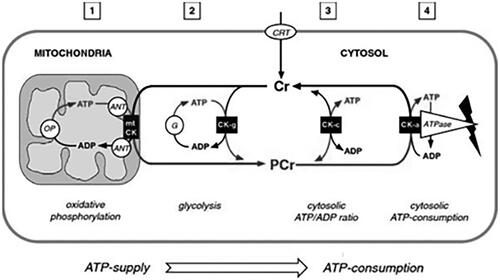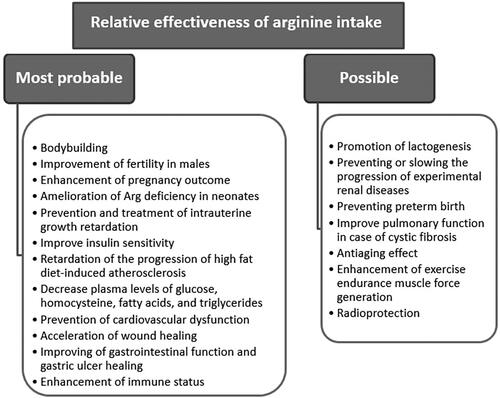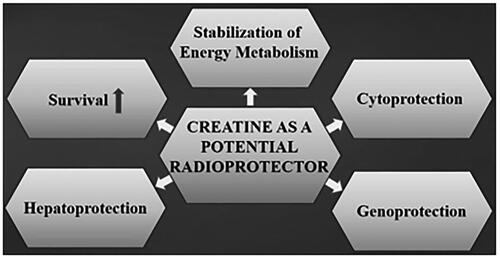Figures & data
Figure 1. Graphical presentation of the role of the Cr–PCr–CK system as an energy buffer and as an energy shuttle. (1) Cr enters the cells through the Cr-transporter (CRT). Within the cell, the PCr/Cr and ATP/ADP ratios are regulated by the soluble fraction of cytoplasmic CK (CK-c; see 3). The cytoplasmic CK specifically associated with glycolytic enzymes (G; CK-g; see 2), takes on glycolytic ATP regenerating PCr, whereas mitochondrial CK (mt-CK; see 1) associated with the adenine nucleotide transporter (ANT) accepts ATP generated through oxidative phosphorylation (OP), releasing PCr into the cytoplasm. The cytoplasmic CK, specifically associated with subcellular sites of ATP consumption (CK-a; see 4), forms microcompartments that regenerate in place with an excess of PCr ATP consumed by ATP-ase reactions. Thus, the Cr–PCr energy shuttle connects subcellular energy production sites with subcellular energy consumption sites (Wallimann et al. Citation2011 adapted).

Figure 2. The relative effectiveness of the therapeutic and preventive use of creatine in various diseases, metabolic disorders and body conditions.

Figure 4. The relative effectiveness of the therapeutic and preventive use of Arg in various diseases, metabolic disorders and conditions of the body.

Data availability statement
Data sharing is not applicable to this review article as no new data were created or analyzed in this study.

